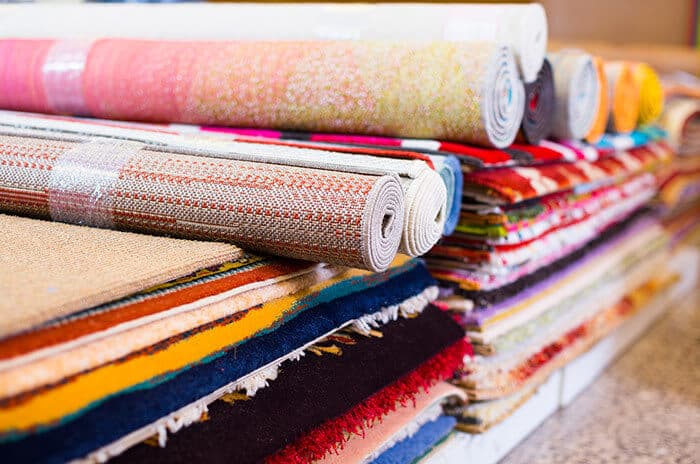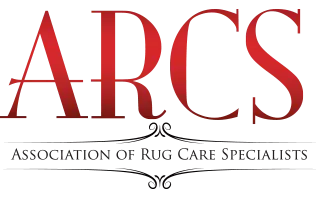Decorating a room involves more than simply picking the right pieces of furniture or the perfect assortment of decor. A huge piece of your design, the piece that can tie the whole room together, is the perfect rug. Choosing the right rug involves knowing the types of rugs you can choose from and, more importantly, what to consider before you go rug shopping.
Things to Consider
Before you head over to buy your new rug, these are the key aspects to rug ownership that you’ll need to take into consideration:
Budget
Thanks to more uses of synthetics, the price range for rugs can vary wildly. Much of it will depend on the materials and fibers in your rugs, as well as the size of the rug you’re choosing. The first rule in creating your rug budget is to factor in the cost of the rest of the furniture in your room. For example, if you are looking for an area rug for your living room, you should match the cost of, say, your sofa or maybe a little more. The rule of thumb is to match the cost of the rest of your pieces of furniture.
The next rule to keep in mind is to factor in a little extra in your budget to allow for some flexibility. Say you find the most perfect wool rug, but it’s just a little bit out of your original budget. By planning on an extra 10-percent or so, you give yourself a little freedom to buy the rug you really want and the one that will last longer without it being unexpected.
Size
Finding the right size for your rug can be a challenge. Many rug shoppers end up with a rug that’s too small. A good way to measure for your rug is to make sure it’s big enough to fit under all your major furniture pieces in the room. If that’s not feasible with your budget, at least make sure that it fits under all the key upholstery pieces.
If you’re shopping for a smaller rug, measure so that all the legs on your smaller furniture pieces are on the rug you choose. For most medium-sized rooms, there’s a good rule to follow: you want your rug and your walls to have between 10 inches and 20 inches of empty floor space between them. While that number can vary slightly, going anywhere from 8 inches to 24 inches, it’s a good way to make sure you get the proper size for the room you’re outfitting.
Design
One of the greatest parts about getting a rug is the opportunity to express yourself through the designs and colors. If you decide to go with a bold pattern, make sure that your furniture arrangement doesn’t cover the pattern or it’s pointless to have it.
If you have an unusual room shape or want to customize your design, there’s another option you should be aware of. Carpet tiles allow you to create the pattern and design of your dreams while also allowing for more versatility. Because you can move and rearrange the carpet tiles, you can rearrange your furniture as much as you want while still having the rug that fits your style.
Maintenance
A rug requires maintenance, just like another piece of furniture in your home. As you would be sure to regularly clean and repair your upholstered furniture, you will need to do the same for your rug. The amount of maintenance that a certain type of rug requires may be the deciding factor. For example, a medium to high-pile rug will require professional cleaning at least once per year to remove any allergens, hair, and dust. But it will also require you to vacuum daily. Another example would be a flat-weave or low-pile rug. These simply require you to shake them out every now and then.
The important thing is to always read the cleaning instructions. Knowing the type of fiber you’re dealing with can also be really beneficial. For example, a rug made of natural fibers won’t be as easy to clean and will likely be permanently damaged if you have a big spill. However, natural fivers can hide minor stains and dirt well, so your daily maintenance might be less than another type of rug. As long as you keep the maintenance and cleaning instructions and be sure to follow them, you’ll be able to keep your rug looking beautiful for years to come.
Know Your Weaves
The weave of the carpet, or how the fibers and materials are woven together to make the rug, is an important consideration to make. Knowing your weaves can help you find the right carpet for your lifestyle.
● Hand-Knotted: This time-intensive method has the benefit of being tested over time. It’s a traditional rug weaving technique in which the fibers are hand-tied to the rug on a loom. It produces a high-quality and durable rug but can be quite costly. That being said, they work in nearly any place in your house and with the right maintenance could be handed down through the generation.
● Tufted: Similar to hand-knotted rugs, tufted weaves are also hand-woven but it uses the top of the yarn loops to create a flatter, more plush and soft surface. This is a more budget-friendly option compared to hand-knotted rugs. However, it will have a tendency to shed its fibers, especially after being rolled and it will need daily vacuuming.
● Hooked: Much like a tufted weave, hooked rugs are looped but then sheared off at the loops to create a more textured finished rug. The biggest benefit compared to a tufted rug is that you won’t have to deal with shedding nearly as much.
● Flat-woven: Also known as “dhurrie,” flat-woven rugs look very much like a mat and are a very durable rug option. They are also available in a variety of materials. Because they are so flat by design, you will need to also invest in a rug pad. The best part about a flat-woven rug is that the pattern is visible on both sides, meaning you can simply flip the rug over when one side becomes worn, making it ideal for high-traffic areas.
● Machine-made: These are rugs that are woven on looms by machines rather than by hand. Because of the industrialization of the process, these are very affordable and provide more consistent quality. It also allows for more elaborate patterns. If you are worried about stains, this might be the rug for you; they are often made with synthetic fibers that are easy to clean. To avoid crushing the pile, keep these in lower-traffic areas.
Types of Rugs
Now that you know the basic considerations you’ll have to make when choosing your rug, you need to know the types of rugs available to you. Combining your knowledge of the different considerations with an understanding of the types of rugs available will set you up for success in your rug search.
Wool Rugs
Made from natural fibers, wool rugs are traditionally handwoven, hand-tufted, hand-knotted, or hand-loomed. Because of the intensive work that has to be done to produce a wool rug, these are often more expensive. That being said, they are great in high traffic areas, like the living room, bedrooms, or entryway, because of the forgiving natural fibers.
Silk Rugs
A silk rug would include any rug that has any inclusion of silk in the fibers and materials. This will give you a unique shine that’s unmatched by any other type of rug. These tend to be thin and fine to the touch, typically meaning a more flat weave. Because of the materials themselves and the intricacy of the production, these are expensive, though could be a family heirloom if properly maintained. The trick is keeping them clean – the silk tends to be difficult to clean, meaning these are best kept in low-traffic areas.
Cotton Rugs
Another natural fiber, cotton rugs are a good compromise that is more friendly to your wallet than a wool or silk rug. These do tend to fade quickly and don’t repel stains, meaning it’s likely you’ll end up replacing them more frequently than you would with another type of rug. However, because of the lower cost and the natural fibers, these are great for casual spaces or areas that you want to change frequently.
Jute and Bamboo Rugs
Once again, we have a natural material, but one that has the ability to add more texture to your room. It’s perfect for layering, even under another rug to better fit your room. If you have a room that needs a large rug, this could be exactly what you’re looking for. It’s worth noting that jute and bamboo rugs tend to show watermarks and can be difficult to clean, so keep that in mind as you consider this option.
Leather, Hide, and Sheepskin
A genuine animal hide, skin, or leather can add a unique flair to any room. Because they are genuinely from an animal, they tend to be much more expensive than some other options. They work very well in small spaces or awkwardly-shaped rooms. And if you want to add texture by layering rugs, these are a great addition. As for maintenance, sheepskin and hides are fairly easy to clean as you’re simply washing the hair like you would your own. However, hides have a tendency to shed and can quickly accumulate dirt. They will require that you shake and wash them regularly.
Faux Fur and Faux Hide
If you want the look of an animal hide, skin, or leather but balk at the price and the ethical sourcing concerns, a faux fur or faux hide could be the answer. You get the same look as you would with genuine animal skin without having the internal debate about the ethics of genuine animal skin. These are typically made with synthetics and blends and aren’t as easy to clean as the real hides.
Polypropylene
Made from synthetics like polypropylene, nylon, polyester, and viscose, polypropylene rugs are a much more affordable option that’s comparable to wool in their softness, though they are usually thinner than a wool rug. These are also easy to clean and fairly fade-resistant, making them great for high traffic areas, especially children’s rooms, entryways, dining rooms, and outdoor spaces. One consideration about this type of rug is the ecological impact. Because these don’t decompose quickly when thrown out, there are some who debate how eco-friendly they are.
Microfiber and Polyester Rugs
Another affordable option, microfiber, and polyester rugs and made of 100% polyester or other synthetics. One of the most coveted materials is PET, a material made from recycled plastic bottles. These are machine woven, but can still mimic wool rugs in a very convincing way. However, they will look dirty faster because the synthetic strands are so smooth. This makes it harder for them to trap dirt, so it will sit on the surface. This is another option that doesn’t have an eco-friendly side. The materials used are petroleum-based, so they may not be something you want your kids to roll around on.
Takeaways
Buying a rug starts with knowing the basic considerations you’ll have to make. From there, knowing the types of rugs is key. However, arguably the most important thing is to know your options for rug cleaning services. Keeping up with your rug maintenance means it will last longer and look better. A simple search of rug cleaning services near me will show you your best connections with professional rug cleaning services.





